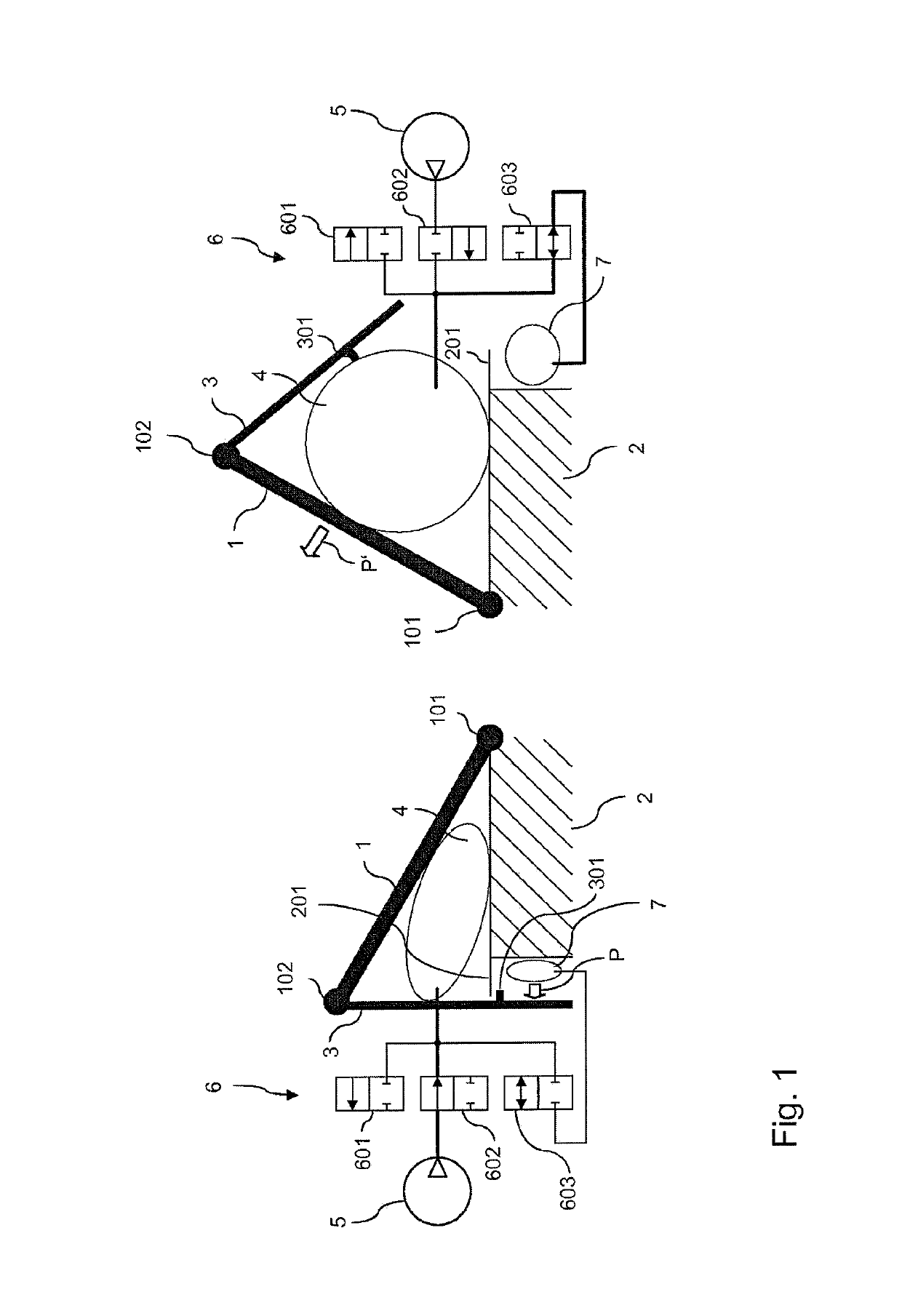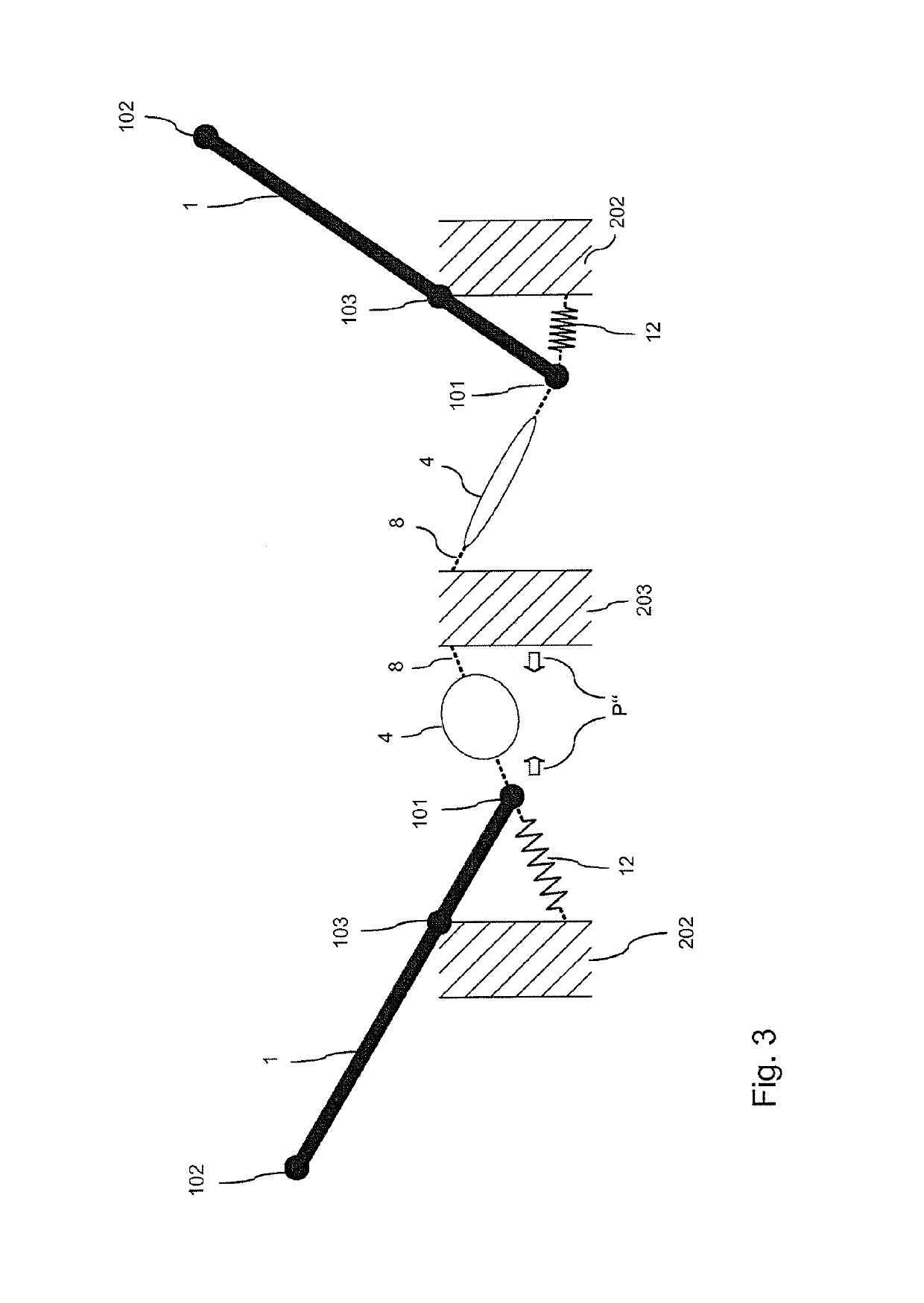Device for pneumatically adjusting a seat in a transport means, in particular a motor vehicle
a technology for transportation means and seats, applied in the direction of movable seats, vehicle components, vehicle arrangements, etc., can solve the problems of large structural space requirements, high noise emissions and high costs, and the storage volume also requires a considerable amount of structural space, so as to achieve a small structural space, simple and fast seat adjustment, and low operating power
- Summary
- Abstract
- Description
- Claims
- Application Information
AI Technical Summary
Benefits of technology
Problems solved by technology
Method used
Image
Examples
second embodiment
[0042]FIG. 2 shows an adjustment device according to an aspect of the invention, which, by contrast to the embodiment of FIG. 1, effects arresting of the flap 1 by way of frictional locking, and which furthermore permits a movement of the flap into various intermediate or end positions. In this way, a variable seat adjustment is made possible, such that the flap is for example moved to a lesser extent in the presence of low lateral accelerations than in the presence of relatively high lateral accelerations.
[0043]In the embodiment of FIG. 2, analogously to FIG. 1, a first air bladder 4 and a second air bladder 7 are provided, which are fed with compressed air from the compressor 5 via a valve device 6 composed of three valves 601 to 603. The valves 601 and 602 in this case correspond to the 2 / 2 valves of FIG. 1. However, by contrast to FIG. 1, the valve 603 of FIG. 2 is a 3 / 2 valve with three ports and two switching positions, wherein the first switching position connects the compres...
third embodiment
[0049]FIG. 3 shows an adjustment device according to an aspect of the invention. In this variant, the flap 1 is articulatedly connected to a structure 202 in the seat by way of a joint 103, such that a lever is produced by way of the flap. Between the end 101 of the flap and the structure 202, there is arranged a tension spring 12. Furthermore, the end 101 of the flap is connected by way of a cable 8 (indicated by way of a dashed line) and interposed air bladder 4 to a further structure 203 in the driver's seat. In the standby state in the left-hand part of FIG. 3, the tension spring 12 is stressed, which is effected by virtue of the air bladder 4 being filled. Said filling causes a shortening of the length of the air bladder 4 in the direction of the arrows P″, and thus to stretching of the spring 12, such that the latter generates a restoring force. In this way, in turn, a preload of the actuating device is realized in the standby position.
[0050]By way of a triggering device, whic...
PUM
 Login to View More
Login to View More Abstract
Description
Claims
Application Information
 Login to View More
Login to View More - R&D
- Intellectual Property
- Life Sciences
- Materials
- Tech Scout
- Unparalleled Data Quality
- Higher Quality Content
- 60% Fewer Hallucinations
Browse by: Latest US Patents, China's latest patents, Technical Efficacy Thesaurus, Application Domain, Technology Topic, Popular Technical Reports.
© 2025 PatSnap. All rights reserved.Legal|Privacy policy|Modern Slavery Act Transparency Statement|Sitemap|About US| Contact US: help@patsnap.com



